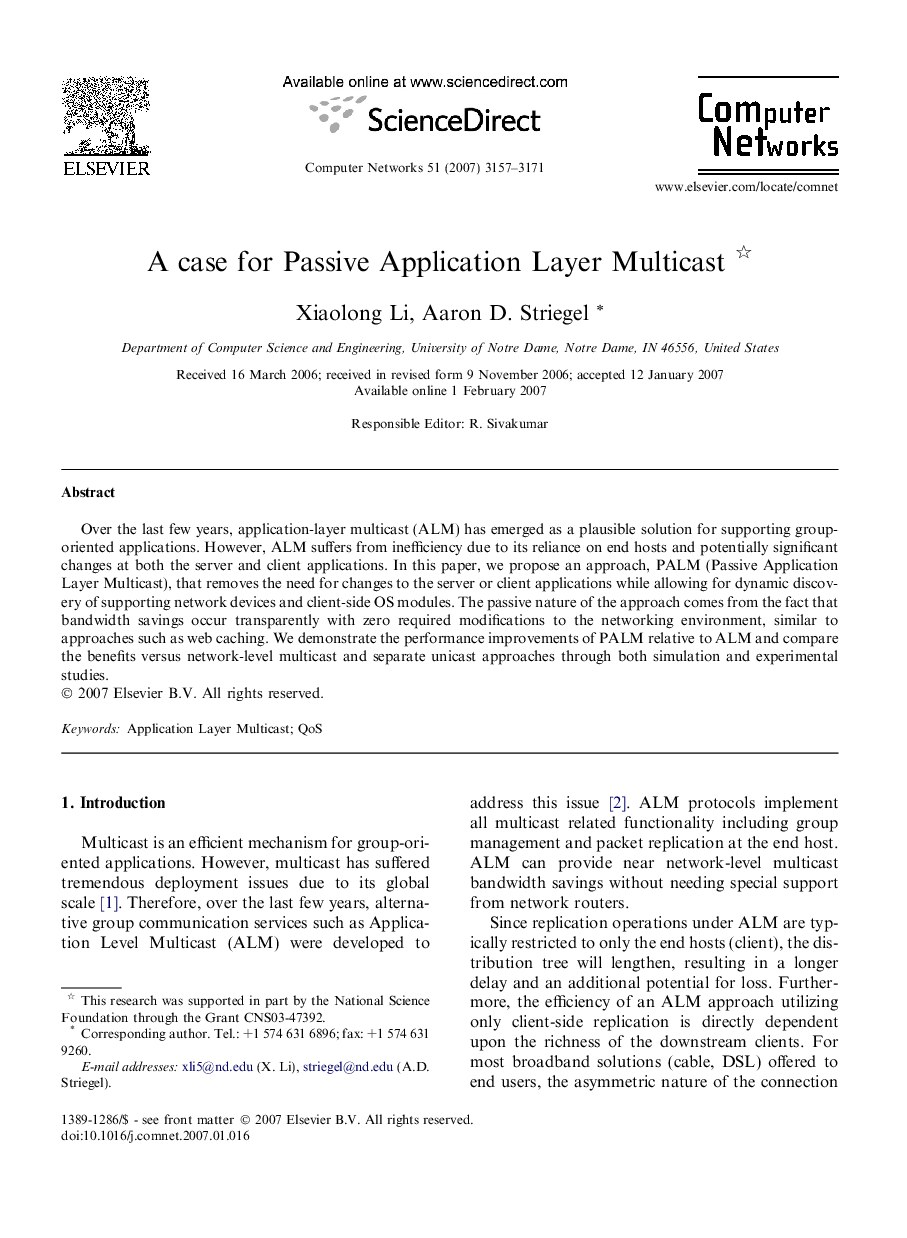| Article ID | Journal | Published Year | Pages | File Type |
|---|---|---|---|---|
| 451530 | Computer Networks | 2007 | 15 Pages |
Over the last few years, application-layer multicast (ALM) has emerged as a plausible solution for supporting group-oriented applications. However, ALM suffers from inefficiency due to its reliance on end hosts and potentially significant changes at both the server and client applications. In this paper, we propose an approach, PALM (Passive Application Layer Multicast), that removes the need for changes to the server or client applications while allowing for dynamic discovery of supporting network devices and client-side OS modules. The passive nature of the approach comes from the fact that bandwidth savings occur transparently with zero required modifications to the networking environment, similar to approaches such as web caching. We demonstrate the performance improvements of PALM relative to ALM and compare the benefits versus network-level multicast and separate unicast approaches through both simulation and experimental studies.
